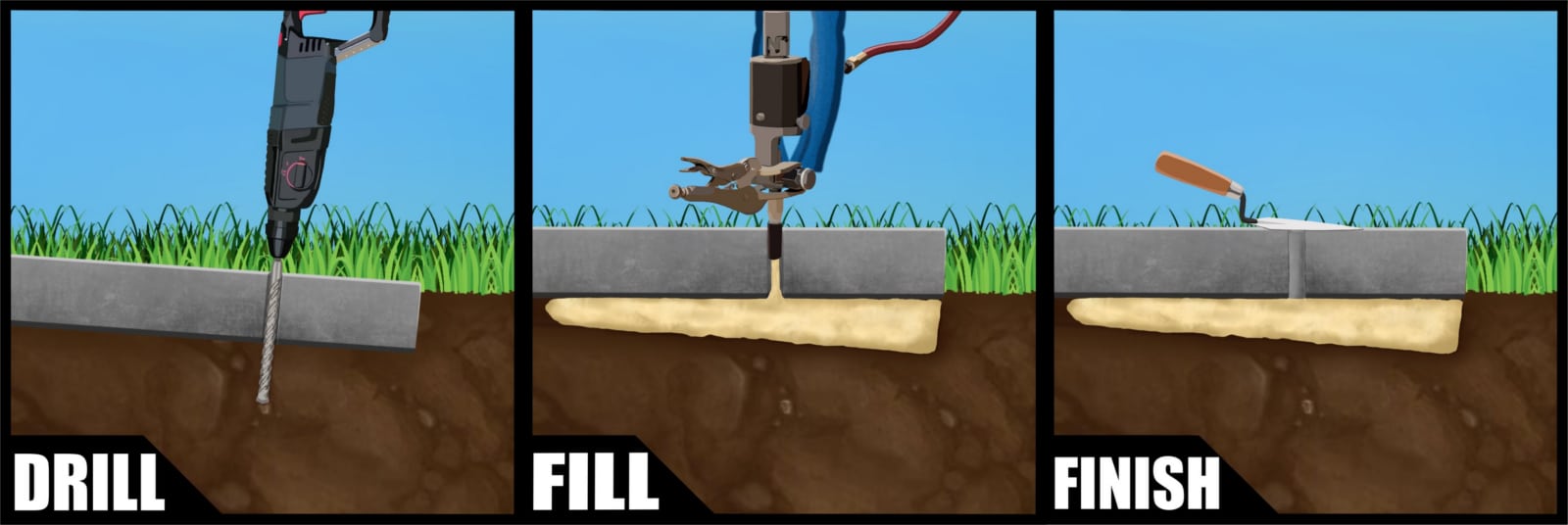Concrete Leveling: Restore Safety and Beauty to Your Property
Uneven concrete isn’t just an eyesore—it’s a hazard. Whether it’s a sinking driveway, an uneven sidewalk, or a sloping patio, unlevel concrete can lead to dangerous tripping hazards and costly structural issues. Fortunately, modern concrete leveling solutions can restore stability, enhance curb appeal, and protect your property from further damage.
Why Concrete Settles and Sinks
Concrete slabs settle over time due to various factors, including:
- Weak Soil Support – Loose or eroded soil can’t properly hold the weight of the concrete, causing it to sink.
- Water Damage – Poor drainage and pooling water can erode the ground beneath your concrete, leading to uneven surfaces.
- Tree Roots – Expanding roots can lift and crack concrete slabs, creating safety hazards.
- Seismic Activity – In earthquake-prone areas, ground shifts can contribute to concrete settling.
FAQs
- What causes concrete to sink or become uneven?
Concrete can settle due to weak soil support, water erosion, expanding tree roots, or seismic activity. Over time, these factors can create cracks, gaps, and uneven surfaces that compromise safety and appearance.
- How can I tell if my concrete needs leveling?
Common signs include cracks, sloping or uneven surfaces, pooling water, visible gaps between slabs, and trip hazards on sidewalks or driveways. These issues indicate that professional lifting may be needed to restore stability.
- Is concrete lifting more affordable than replacement?
Yes. Concrete lifting typically costs about 50% less than full replacement. It’s also faster, less disruptive, and doesn’t require tearing out existing slabs or damaging surrounding landscaping.
- How long does it take before I can use my leveled concrete?
Leveled concrete is usually ready for foot traffic immediately and vehicle traffic within 15 minutes—making it a fast and convenient solution.
- What types of surfaces can Idaho Concrete Lifting repair?
We lift and level a wide range of concrete surfaces including sidewalks, driveways, patios, porches, garage floors, basement floors, pool decks, highways, and railbeds.
